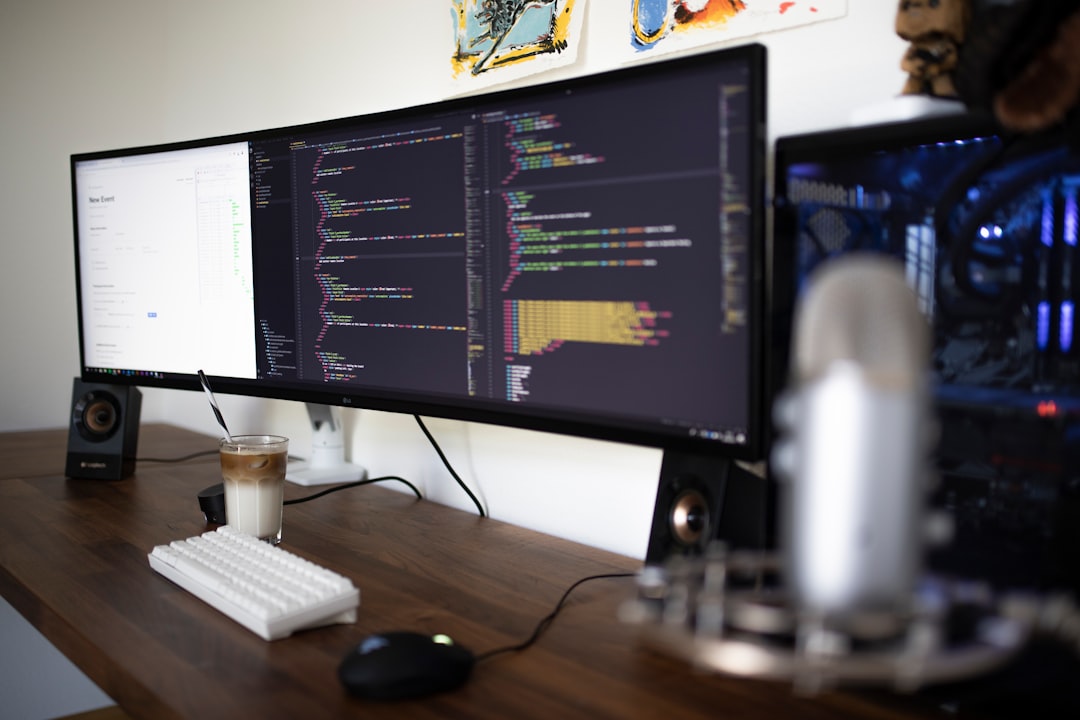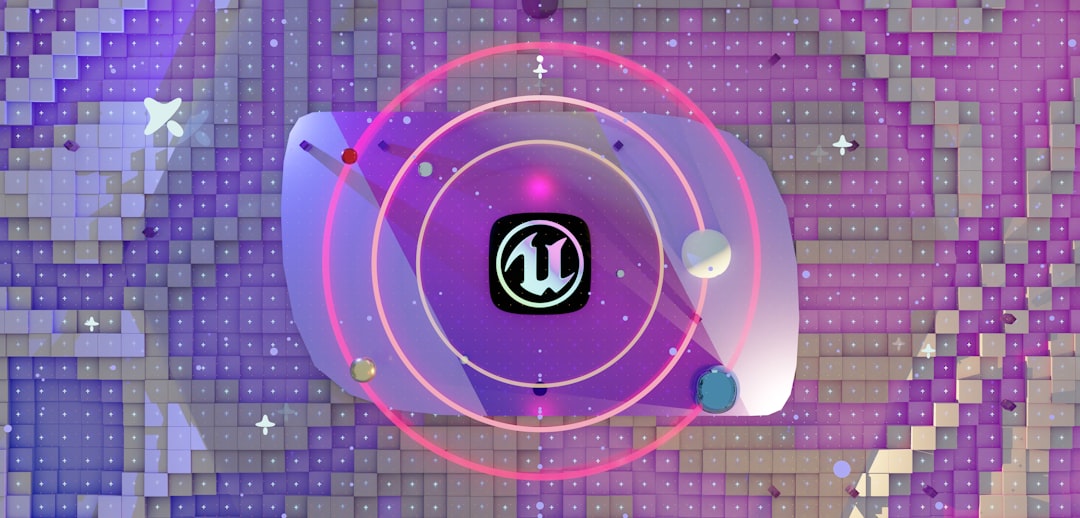GIMP's Path Tool Precision Background Removal for Complex Images in 2024
GIMP's Path Tool Precision Background Removal for Complex Images in 2024 - Path Tool Basics for Complex Image Selections
GIMP's Path Tool, formerly known as the Bézier Selection tool, empowers users to craft complex selections using Bézier curves. This approach offers a much higher degree of accuracy compared to the standard rectangular or elliptical selections. The flexibility extends beyond just making selections; users can manipulate these paths, use them as guides for painting, and even store them for future use in other projects. This reusability aspect makes the Path Tool incredibly valuable for those working on a variety of images.
The tool is easily accessible, activated either via the 'B' key, the toolbox icon, or through the Tools menu. Once activated, the mouse cursor transforms into a crosshair with a curved line, signaling that the tool is ready for action. GIMP smartly bridges the gap between traditional selections and path-based ones, letting users easily switch between the two.
This interoperability is crucial for seamless workflows, especially in intricate image editing. Whether you're isolating a complex subject, shaping curves, or constructing geometric forms, the Path Tool can handle it. Moreover, the Paths panel, which becomes visible when the tool is selected, centralizes path management, making it convenient to work with. Even without a graphics tablet, the Path Tool provides a viable route to precise selections using just a mouse. This makes it an invaluable tool for image refinement, offering photographers a means to attain remarkable levels of control and detail in their editing.
GIMP's Path Tool, built upon Bézier curves, offers a powerful means of crafting highly specific paths, thereby facilitating selections that capture complex image details with precision. The Paths dialog acts as a central hub for managing multiple paths, allowing for seamless toggling and modification of individual paths without impacting others.
This tool distinguishes itself from simpler selection methods by prioritizing curves and points rather than solely relying on pixel colours. This approach makes it particularly effective in high-contrast scenarios where fine details abound, unlike traditional methods that struggle with intricate edges. Furthermore, the editable nature of anchor points in paths means that refinements to a selection are possible after its initial creation, eliminating the need for constant restarts, a valuable feature during time-sensitive image editing.
Its functionality allows seamless transitions between path and selection modes via a single click, streamlining the process of moving between design and editing stages, enhancing efficiency, especially when navigating complex projects demanding numerous adjustments. Additionally, the generation of closed paths enables the filling of selections with colours or patterns, providing users with more control over creative expressions compared to standard selection methods.
One can apply consistent line styles via the 'Stroke Path' function, which can prove helpful in the creation of graphics or overlays with consistent results across projects, enhancing the professionalism of the output. It is particularly valuable for removing watermarks as it offers accurate adjustments around the watermark itself. Thus, the unwanted portion can be carefully selected and removed or manipulated without causing damage to the surrounding areas.
Upscaling image quality can also benefit from proficiency with the Path Tool. Through accurate path definition, undesirable blurring and distortions around edges can be significantly minimized during upscaling. By doing so, the output maintains greater sharpness compared to the results achievable using simpler tools. Complex masking techniques become accessible through precise path control. This ability enables intricate edits on top of a background without damaging it, leading to sophisticated image compositions without compromising overall quality. This, in turn, extends the potential of the editing process beyond traditional techniques.
GIMP's Path Tool Precision Background Removal for Complex Images in 2024 - Adding Alpha Channel for Transparency Support
To make your images in GIMP support transparency, you need to enable an alpha channel within the image layer. This is a simple process, accessible through the "Layer" menu by selecting "Add Alpha Channel," or even quicker, by right-clicking the layer in the Layers Panel. Once the alpha channel is added, you're ready to harness the power of the Path Tool for more precise selections. This is particularly valuable when dealing with complex images, allowing you to isolate the main subject and carefully remove unwanted backgrounds. Remember that when you're done, to retain that transparency you need to save your image in a file format that supports it, like PNG. Understanding how to work with alpha channels and achieve transparency in GIMP will significantly boost your ability to create more polished images and streamline your editing process.
To enable transparency within GIMP, we need to introduce what's known as an alpha channel. This essentially acts as a separate layer within the image, dictating the opacity level of every single pixel. By fine-tuning the alpha channel, we can create smooth fades between visible and invisible areas, bringing a new level of depth to the image. However, adding this alpha channel can significantly inflate the image's file size, especially when dealing with complex gradients or detailed designs. Understanding different compression methods is key to ensuring transparency support while maintaining a manageable file size.
The ability to use transparency hinges on the file format. Many formats, like PNG and TIFF, are equipped to handle alpha channels, but others, like JPEG, are not. This can become a hurdle when transferring images between different applications, as the transparency can get lost in the transition. Careful consideration of the intended use case is crucial when deciding on which format to save in.
Furthermore, transparency can have a notable impact on how smoothly GIMP handles the image during editing, particularly for real-time editing operations. Images with complex alpha channel data may require more processing power, highlighting the need for adequate graphics hardware if users are tackling intricate designs. This can be a bottleneck for some users.
One issue to consider is that not all software applications process transparency uniformly. Some might display errors or render transparency incorrectly. This can be a frustrating obstacle when collaborating on image projects across different programs. This is especially true if one wants the images to be accessible to a wide audience on various platforms.
For web applications, using transparency often involves a careful balancing act between the image format and file size. PNG typically yields better rendering of transparency on the web, but the larger file size can impact how fast a webpage loads and its accessibility for those with slower internet connections.
The underlying color model plays a role in how transparency is managed. For instance, RGB uses an additive blending method, where the alpha channel controls how it combines with the background, whereas CMYK, used more for print, handles it differently. This can sometimes lead to unexpected disparities between digital displays and printed output.
The alpha channel opens up opportunities to explore creative visual effects. By combining multiple images and applying layered effects with transparency, it's possible to achieve sophisticated graphic compositions and animations. Learning how to control the alpha channel can truly unlock a new level of artistic expression within GIMP.
Furthermore, if you decide to revert an image to its non-transparent state, you can redefine the alpha channel's values. This way, it's possible to restore the original pixel colors, which can be very helpful when working iteratively and making adjustments throughout the process.
There are some emerging applications of the alpha channel within the realm of AI-driven image enhancement. Certain AI models leverage transparency to identify areas of focus within an image. This capability enhances the precision of certain algorithms for tasks such as object detection. It will be interesting to see how the use of alpha channels in image AI continues to develop.
GIMP's Path Tool Precision Background Removal for Complex Images in 2024 - Drawing Precise Paths Around Intricate Subjects
The ability to precisely trace intricate subjects within GIMP is a defining factor in achieving high-quality image edits, particularly when intricate details are crucial—such as when removing a background. The Paths Tool offers a distinct advantage by allowing for the creation of selections using Bézier curves, which provide a flexibility and accuracy that simple rectangular or elliptical selections simply cannot match. This is especially helpful when working with intricate features, such as strands of hair or delicate textures, ensuring the edited image retains sharpness and precision.
Beyond initial creation, paths can be refined and adjusted, fostering an iterative editing process without needing constant restarts. This dynamic aspect makes achieving professional-looking results achievable, whether refining a photo or creating detailed graphics. In essence, mastering this tool is essential for anyone looking to enhance their image editing workflow and gain deeper control within GIMP's robust editing features. It truly can improve the overall quality of images and help users achieve their goals more easily.
GIMP's Path Tool, built upon Bézier curves, enables incredibly precise path creation, which is particularly useful for selecting complex areas within images for tasks like background removal. These curves, defined mathematically, allow for a level of accuracy that's hard to achieve with simpler tools. Being able to fine-tune anchor points along these curves gives users the ability to adjust selections on the fly without needing to start from scratch, speeding up the editing process in complex scenarios.
The Path Tool isn't just for selection though; you can create closed paths that can then be filled with colors or patterns. This allows for more creative flexibility, leading to greater design possibilities. Notably, this tool thrives in images with a high degree of contrast, where fine details can be easily lost using other selection methods. Its ability to follow intricate edges with accuracy makes it ideal for detailed compositions.
It's worth mentioning that using transparency, made possible through the alpha channel, can have an impact on file sizes, especially if the image has gradients or intricate detail. This highlights the need for a better understanding of compression methods. Also, computationally demanding operations on images with complex alpha channel data can strain a system's processing power, leading to potential performance issues. This is worth bearing in mind if you are working on more intensive projects.
Another point to consider is that not every piece of software handles transparency in the same way. While formats like PNG are well-suited for preserving alpha channel data, compatibility issues can arise when transferring images between applications, which could become a problem in collaborative workflows.
Furthermore, the difference between color models (like the additive blending of RGB versus the subtractive blending of CMYK) impacts how transparency is managed. Understanding this difference can help prevent discrepancies between digital and printed outputs.
There's also a fascinating intersection emerging between AI and image manipulation where alpha channels play a role. Certain AI tools leverage transparency information to focus specific enhancements within an image, potentially leading to future improvements in automated editing and image manipulation techniques. It remains to be seen exactly how AI will integrate with image transparency management in the future.
GIMP's Path Tool Precision Background Removal for Complex Images in 2024 - Converting Paths to Selections for Background Removal
Once you've carefully traced around a subject in GIMP using the Paths Tool, turning that path into a selection is essential for removing backgrounds, especially in intricate images. This is particularly helpful for complex areas like detailed hair or textured materials, where precise edges are crucial for maintaining image quality. Converting the path to a selection lets you easily delete the unwanted background or apply a layer mask to refine the edges further. This approach empowers you to achieve very clean and polished results without sacrificing the fine details that make an image impactful. Ultimately, this streamlined process, which is common practice for modern image editing, helps enhance workflow efficiency and produce higher-quality, visually-refined results.
The Path Tool relies on Bézier curves, a mathematical construct that uses control points to shape smooth, flexible curves. This allows for exceptionally detailed and intricate selections, going far beyond the limitations of basic selection tools. GIMP cleverly enables non-destructive editing when converting paths to selections, letting you revisit and modify them without losing the original path information, which can drastically improve workflow, particularly when refining an image iteratively.
Interestingly, even the smallest adjustments to control points can have a dramatic impact on the resulting curve's form. This provides a high degree of control, crucial when dealing with intricate details like hair strands or fabric textures, ensuring those delicate features are captured accurately. Notably, the Path Tool's precision can also compensate for some of the blur in an image, letting users define paths around edges that might be challenging to select otherwise. This helps preserve detail in images that might not be perfectly sharp.
Reusing and modifying existing paths across different projects is a real advantage of this tool. This means significant time savings for common selections, streamlining the editing process rather than starting from scratch every time. Using the Path Tool can significantly reduce cognitive load, as changes to a path are instantly reflected in the selection. This immediate visual feedback is a big help in making decisions during the editing process.
Unlike more traditional selections, which can struggle with noise and variations in color, the Path Tool's geometric nature allows for highly accurate selections, especially in high-contrast images. This helps ensure that fine details are not lost during the selection process. It's worth noting that GIMP's Path Tool performs most efficiently in the RGB color space due to its additive blending. However, when handling images for print, which often use CMYK, the results can be different, requiring adjustments in the workflow.
While designed for selections, paths can also generate filled shapes that can be used for backgrounds or overlays. This adds a creative dimension, especially for graphic design, enabling layered compositions that wouldn't be possible with traditional selections. Even in the evolving realm of automation, the Path Tool has a role to play. GIMP's scripting and plugin ecosystem can use the data from paths, enabling batch processing of images requiring repeated selections, making the tool even more powerful in professional workflows. It will be interesting to see how this interplay between paths, automation, and AI image enhancement unfolds in the future.
GIMP's Path Tool Precision Background Removal for Complex Images in 2024 - Refining Edges with Antialiasing and Feathering Options
When removing complex backgrounds in GIMP using the Path Tool, refining the edges is crucial for a seamless outcome. This is where antialiasing and feathering come into play. Antialiasing helps smooth out any jagged edges created by the selection, especially noticeable around intricate areas like hair or fine textures. It does this by blending colors along the selection boundary, resulting in a more natural appearance. Feathering takes this a step further, softening the edge even more. This produces a gradual transition between the selected element and its surroundings, making it easier to integrate the element into a new backdrop without harsh boundaries. These techniques are essential for achieving professional-looking results when using the Path Tool for complex selections, as they prevent unwanted artifacts and preserve the intricate details that matter. The more effectively you use them, the quicker your editing becomes and the fewer edits will need to be made to your images.
When refining the edges of selections, especially during complex background removal, GIMP offers valuable tools like antialiasing and feathering. Antialiasing, in essence, softens the harsh transitions between pixels at the edge of a selection, resulting in a smoother, more natural-looking blend. This is particularly useful when isolating intricate details, preventing those telltale jagged edges that can detract from the overall image quality.
Feathering is another technique for refining edges, but instead of smoothing out pixels, it creates a gradual fading of the selection's border. This creates a more gradual transition, blurring the line between subject and background and fostering a more seamless integration. The result is a less artificial-looking edge, making the subject blend more naturally within the image.
The effectiveness of these techniques is linked to the precision of the path used for selection. GIMP's Path Tool, based on Bézier curves, provides highly detailed and accurate paths. These curves, defined by mathematical equations and controlled through anchor points, offer a unique level of control when dealing with complex subjects like strands of hair or fabric textures. This mathematical backbone is particularly valuable for scenarios where precise edges are crucial, allowing users to trace even the most intricate details faithfully. The path's vector-based nature allows for scaling and adjustments without any loss in clarity, unlike raster-based edits where enlarging an image could lead to pixelation.
Furthermore, GIMP's Path Tool allows for real-time adjustments to control points, enabling immediate visual feedback on how adjustments impact the selection's shape. This dynamic interplay between the user's actions and the resulting curve empowers a more intuitive editing process, fostering greater accuracy and a quicker workflow, especially in fast-paced situations where swift changes are needed.
The advantages of these techniques are amplified when dealing with high-contrast images. In scenarios where distinct color variations exist, traditional selection tools might fail to capture subtle details effectively. The Path Tool's ability to define shapes based on precise mathematical equations allows for greater accuracy and sharpness in such instances.
The alpha channel, while serving as the foundation for transparency, also has a subtle yet significant impact on the interplay between antialiasing, feathering, and layered edits. Understanding this interaction enables the creation of more intricate and nuanced images. Furthermore, for those who work on large image sets requiring similar adjustments, GIMP's scripting capabilities allow for the automation of repetitive path manipulations, streamlining the entire process and saving significant time.
This increased control over edge refinement also improves the quality of images being upscaled. The precise paths generated with the Path Tool can minimize the blurriness that often accompanies enlarging, maintaining the sharpness and integrity of the original image details.
Lastly, we're starting to see the connection between path-based selections and emerging AI tools. These AI models are beginning to leverage the information contained within carefully crafted paths for tasks like object detection and image segmentation. As AI algorithms become more sophisticated, the accuracy of the paths generated with GIMP's tools could potentially play a more significant role in improving their ability to understand and process images, leading to a fascinating new frontier in image editing and manipulation.
GIMP's Path Tool Precision Background Removal for Complex Images in 2024 - Exporting Transparent Images in PNG Format
When you're ready to export a transparent image in GIMP using the PNG format, the alpha channel is your key to success. It's a crucial step to ensure that your carefully crafted transparency—achieved through using the Path Tool for precise selections and background removal—is retained in the exported file. After meticulously defining your subject using paths and removing any unwanted background elements, it's a good idea to verify that the "Alpha" channel is still present within your image. This is important to maintain that transparency when saving the file. To export, head to File > Export As and choose the PNG format, making sure your chosen settings are configured to maintain transparency. This sequence ensures your final exported image retains the sharp, clean edges you've worked so hard to create. Taking care of this detail during export helps refine your workflow, contributing to more polished and ultimately better-looking image outputs, particularly useful for projects involving intricate or complex subjects.
1. **PNG's Alpha Channel and Transparency**: The PNG format's alpha channel offers fine-grained control over transparency, going beyond simple on/off states. It allows for smooth gradients and complex interactions with backgrounds, resulting in more visually appealing composites.
2. **Balancing Quality and File Size**: While PNG with transparency provides flexibility, it often comes at the cost of increased file size, especially with intricate gradients and layered transparent areas. Finding the sweet spot between image quality and manageable file size requires a good understanding of compression techniques.
3. **Bézier Curves: The Path Tool's Backbone**: GIMP's Path Tool relies on Bézier curves, which are defined mathematically using polynomial equations. This mathematical foundation enables high-precision path generation, capturing fine details like hair strands and intricate textures that would be difficult with standard selection tools.
4. **Antialiasing's Role in Smoother Edges**: When converting paths to selections, antialiasing plays a key role in mitigating jagged edges. This is especially crucial in high-contrast images where sharp transitions can be jarring. It subtly blends colors at selection boundaries, improving the visual quality of the outcome.
5. **Feathering for Natural Blends**: Feathering complements antialiasing by softening the transition between the selected area and its surroundings. This creates a more natural-looking integration, reducing the appearance of artificial borders around complex elements. The result is a more visually harmonious image.
6. **Dynamic Path Adjustment**: The Path Tool allows for immediate visual feedback when adjusting control points, fostering a fluid and intuitive editing process. This real-time adjustment capability helps prevent the need for numerous restarts and ensures greater accuracy in achieving desired outcomes.
7. **Color Spaces and Transparency Interactions**: GIMP's Path Tool typically operates best in the RGB color space, which utilizes additive color blending. However, when preparing images for print, the CMYK color space, with its subtractive blending, can interact with transparency differently, demanding a nuanced approach.
8. **Automation's Potential**: GIMP's scripting capabilities offer a means to automate repetitive tasks involving paths. This automation can be particularly valuable for professionals working with large image sets that require consistent editing procedures, like bulk watermark removal or image batch processing.
9. **Reusability for Workflow Efficiency**: Once you've defined a path, it's possible to save it and reuse it across various projects. This reusability is extremely beneficial for photographers and graphic designers who frequently make similar selections. It streamlines workflows and eliminates the need to recreate paths from scratch.
10. **AI and Transparency: A Look Ahead**: As artificial intelligence finds more applications in image processing, there's a growing possibility that transparent paths might guide AI algorithms. For instance, AI models may utilize path information to perform more precise object detection or image segmentation. This suggests a future where tools like the Path Tool could play a crucial role in shaping automated image editing and manipulation techniques.
More Posts from kahma.io:
- →How Portrait Photographers Generate Transparent Backgrounds A Technical Analysis of 7 Methods
- →How to Create Transparent Backgrounds in MS Paint A Step-by-Step Guide for Portrait Photographers
- →7 Cost-Effective Alternatives to Stock Photos for Your 2024 New Year Professional Headshots
- →Analyzing AI Headshots: Step-by-Step Background Removal for Distinctive Online Presence
- →Decoding the Hype: A Critical Look at AI Profile Picture Generators
- →The Hidden Costs Comparing Traditional School Photography vs AI Headshot Solutions for Yearbook Photos in 2024



